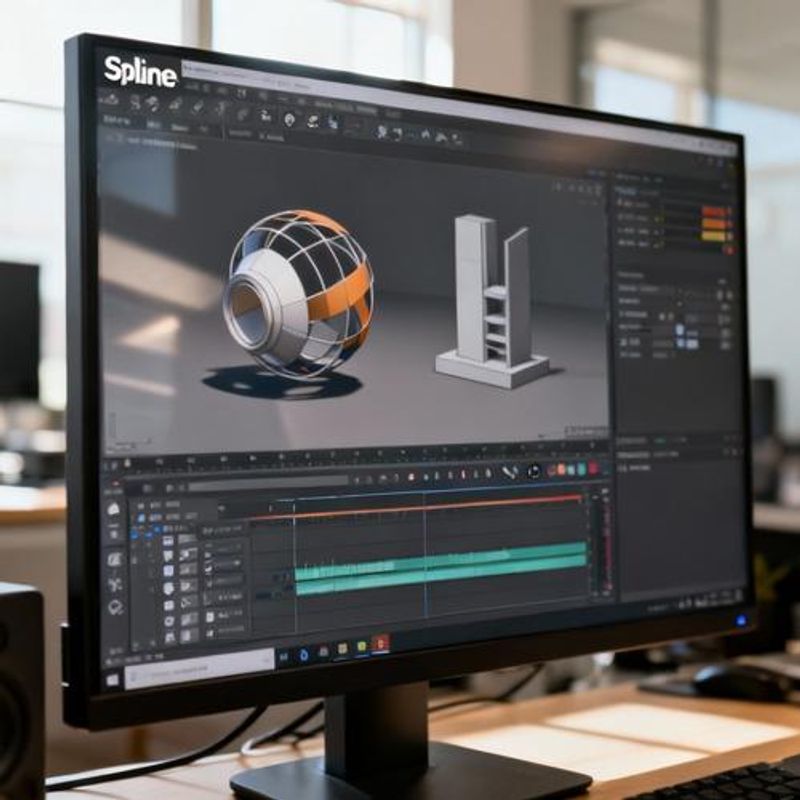How to Use Spline to Create 3D Web Animations: A Complete Guide for Intermediate Designers

As client expectations evolve toward more immersive web experiences, you've likely found yourself needing to deliver 3D animations that once required expensive software and lengthy render times. Spline has emerged as a game-changing solution that lets intermediate designers create professional 3D web animations without the complexity of traditional 3D tools. This comprehensive guide will walk you through Spline's workflow, from initial setup to deployment, helping you integrate stunning 3D elements into your web projects efficiently.

Why Spline Matters for Modern Web Design
The gap between static web design and engaging user experiences continues to widen. Traditional 2D animations, while effective, often fall short of creating the immersive experiences that distinguish premium digital products. As an intermediate designer, you're perfectly positioned to leverage 3D animations – you understand design principles and user experience, but you need tools that don't require months of 3D modeling training. Spline addresses this exact challenge by providing an intuitive interface that translates your existing design knowledge into three-dimensional space, while generating web-optimized code that performs well across devices.
Quick Start: What You'll Achieve
By following this guide, you'll master the complete Spline workflow and be able to create:
- Interactive 3D product showcases that respond to user input
- Smooth page transitions and scroll-triggered animations
- Lightweight 3D elements that load quickly and perform smoothly
- Responsive 3D scenes that adapt to different screen sizes

Setting Up Your Spline Workspace
Start by creating your Spline account and familiarizing yourself with the interface. The viewport functions similarly to design tools you already know – think Figma meets Blender, but simplified. Configure your workspace by adjusting the grid settings to match your project scale and enabling the timeline panel for animation work. Import any existing assets or brand elements you'll need, keeping in mind that Spline works best with clean, geometric shapes and optimized textures under 2MB.
Creating Your First 3D Animation
Begin with a simple rotating product showcase – this foundational animation teaches core Spline concepts while delivering immediate value. Create a basic geometric shape or import your 3D model, then establish keyframes at 0 seconds (initial position) and 4 seconds (one complete rotation). Use Spline's easing curves to create natural motion that feels organic rather than mechanical. Add subtle lighting changes throughout the rotation to enhance the three-dimensional effect and create visual interest.
Advanced Interaction Techniques
Move beyond basic animations by implementing mouse and scroll interactions. Configure hover states that reveal product details or change materials dynamically. Set up scroll-triggered animations that activate as users navigate through your content, creating a sense of progression and discovery. Use Spline's state management system to create smooth transitions between different views or configurations of your 3D objects, allowing users to explore variations or customization options.
Optimizing Performance for Web Deployment
Performance optimization separates professional implementations from hobby projects. Reduce polygon count by using Spline's built-in optimization tools, particularly for objects that appear smaller or in the background. Implement level-of-detail (LOD) strategies by creating simpler versions of complex objects for mobile devices. Configure proper texture compression and consider using Spline's auto-optimization features for different device capabilities. Test your animations on various devices and connection speeds to ensure consistent user experience.
Integration Methods and Export Options
Spline offers multiple integration approaches depending on your project requirements. The embed method works perfectly for quick prototypes and simple implementations – just copy the generated iframe code. For more control, use the React component export which allows custom styling and event handling. The JavaScript SDK provides the most flexibility, enabling complex interactions with your existing web application logic. Choose the method that aligns with your technical constraints and performance requirements.

Practical Project Templates
Start with these proven project templates that address common client requests: Product showcase with 360-degree rotation and material swapping capabilities. Hero section animation featuring floating geometric shapes that respond to mouse movement. Interactive timeline that uses 3D space to display project milestones or company history. Portfolio gallery where 3D frames transition smoothly between different work samples. Each template includes pre-configured lighting, materials, and interaction states that you can customize for your specific brand requirements.
Common Pitfalls and How to Avoid Them
Avoid the temptation to over-animate – subtle, purposeful motion creates more impact than constant movement. Don't ignore mobile performance during the design phase; test early and often on actual devices, not just browser dev tools. Be cautious with complex materials and multiple light sources, as these significantly impact rendering performance. Skip auto-play animations on mobile to respect user data and battery life. Always provide fallback content or loading states for slower connections, and consider implementing a reduced-motion option for accessibility compliance.
Next Steps and Advanced Learning
You now have the foundation to create professional 3D web animations using Spline. Start by implementing one of the project templates in your next client project, focusing on smooth performance and meaningful interaction design. As you build confidence, explore Spline's physics simulation features and advanced material properties. Consider joining Spline's community forums for ongoing inspiration and technical support. The intersection of 3D design and web development continues to evolve rapidly – positioning yourself as a designer who can deliver these experiences will significantly differentiate your services in an increasingly competitive market.